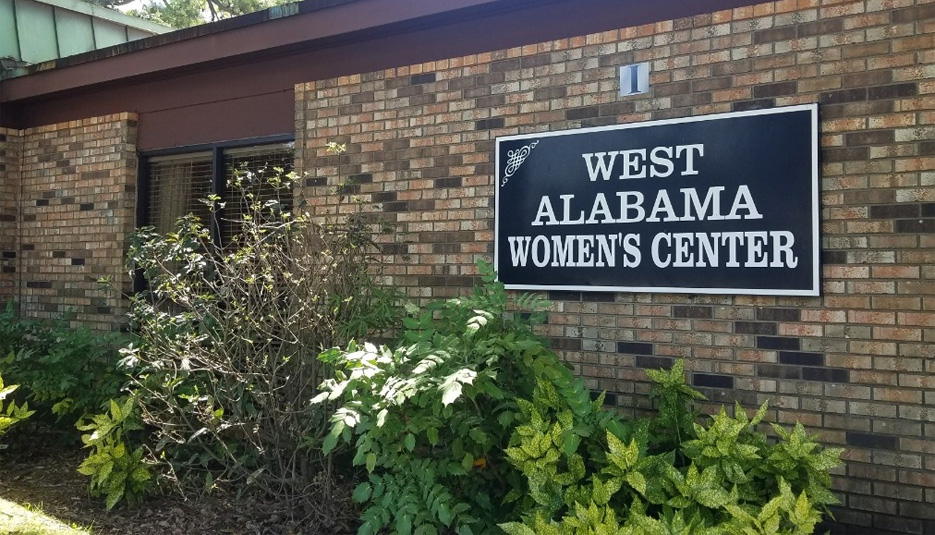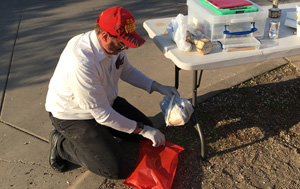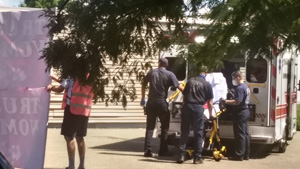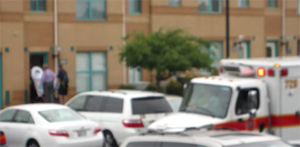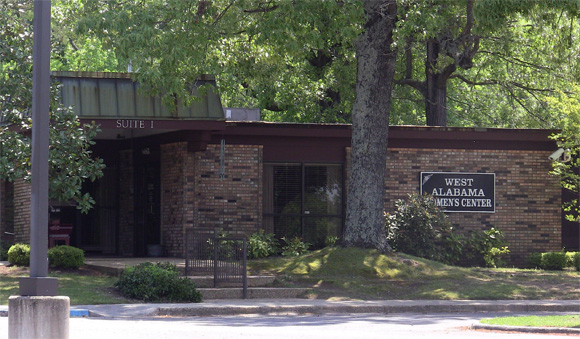
By Cheryl Sullenger
Tuscaloosa, AL – An Alabama woman has filed a medical malpractice suit against the West Alabama Women’s Center (WAWC) abortion facility in Tuscaloosa and one of its abortionists, Tamer Middleton, after she endured a near-fatal botched second trimester abortion last December.
Her complaint detailed her injuries that bear similarities to those that resulted in the death of WAWC patient April Lowery in May 2020.
The plaintiff filed her suit on November 11, 2021, under the pseudonym Jane Stone. Her true name is sealed under a protective order.
Jane Stone was lucky to survive her ordeal, which included being misled about the abortion process and its potential complications, forced dilation of an inadequately prepared cervix that resulted in cervical lacerations and perforation, uterine perforation, sliced broad uterine ligament and arteries, massive internal hemorrhaging, and a refusal of WAWC staff to heed her pleas for an ambulance to transport her to the hospital until she lost consciousness.
Misinformation
Stone’s complaint alleges that she went to the WAWC in Tuscaloosa on December 22, 2020, to be evaluated for a second trimester abortion because genetic testing showed that her baby boy was “pre-disposed to suffer from lifelong health disorders, including Downs Syndrome [sic].”
[Note: Operation Rescue is opposed to abortions on babies with Down syndrome as well as for any other conditions or “fetal anomalies.” There appeared to be no official diagnosis mentioned in Stone’s complaint that indicated her baby actually had Down syndrome – only that he was “predisposed.”]
After a longer than normal wait, a WAWC nurse identified in the complaint as Mamie Newton called Stone to begin the evaluation and later apologized for her wait, saying the clinic was “understaffed and overbooked.”
Newton discussed the potential for abortion complications. She explained to Stone that hemorrhaging was a common complication to Dilation and Evacuation (D&E) abortions, but if indeed she did hemorrhage, she would be treated at the clinic.
Outpatient abortion facilities like WAWC are not equipped to handle cases involving serious hemorrhaging. That is why it is the standard of care to transport women who suffer this complication to a local emergency room.
The “factual allegations” that detailed Stone’s ordeal stated further:
While discussing the risks, Jane Stone asked Nurse Newton whether any patients had ever died or suffered life-threatening complications from the procedure. In response, Nurse Newton explained that a patient had died following a procedure performed at the clinic, but that the patient’s death was the result of drug use and not related to the procedure or complications of the procedure.
However, this statement is false. The patient to which Newton was referring was April Lowery, 29, who died on May 7, 2020, after receiving abortion-related internal injuries at WAWC. Her autopsy report, dated May 21, 2020, clearly stated that her cause of death was “Uterine perforation.”
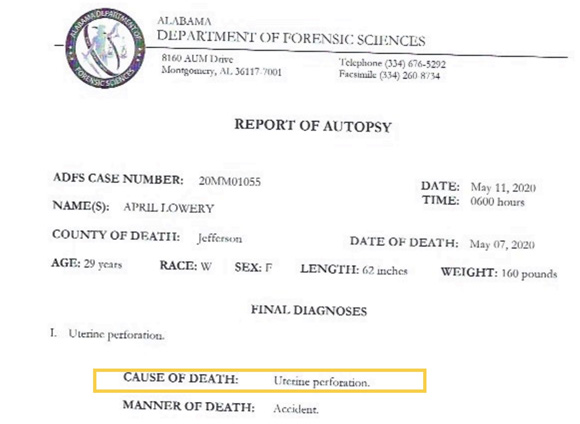
cause of death as “Uterine perforation.”
Stone was then given an ultrasound examination by Nurse Newton, in which Newton told her that “she could tell the baby had Downs Syndrome [sic] based on the appearance of his eyes.”
According to the National Institutes of Health, there two different kinds of tests for Down syndrome, neither of which involves a nurse diagnosing the condition by viewing the baby’s eyes during an ultrasound examination.
“It seems possible that Jane Stone may have thought twice about an abortion if she had not been fed misinformation by the abortion facility nurse,” said Operation Rescue President Troy Newman. “I cannot presume to know what she may have done had she known the true dangers she faced during an abortion, but no one can truly make a fully informed decision based on falsehoods.”
Cutting corners
Stone returned to WAWC on December 28, 2020, at around 10:39 a.m. for her second trimester abortion. After waiting approximately an hour and 50 minutes, she finally saw Tamer Middleton, the abortionist who would conduct her D&E dismemberment abortion.

Stone was given Cytotec, also known as misoprostol, a drug that softens the cervix and induces uterine contractions. But instead of waiting three hours to allow the drug to work, Stone was called back for her abortion procedure, which began at 1:30 p.m., just one hour after she took the Cytotec, also known as Misoprostol, a drug that causes cervical softening and induces strong, sometimes unpredictable uterine contractions.
Middleton mechanically dilated Stone’s unprepared cervix with “rigid steel Pratt dilators,” which quickly forced the cervix open – a process known to cause injury to the cervix.
Then, according to Stone’s suit, “. . . Middleton then inserted a 14-millimeter suction cannula into Jane Stone’s uterus and electrically aspirated the uterine contents.”
For perspective, the cannula diameter is several millimeters smaller than that of a U.S. dime.
The standard way to conduct a D&E abortion is to first prepare the cervix with laminaria dilators and/or Misoprostol to slowly expand the cervix to avoid injury. Forceps are then used to dismember and remove body parts, because they are too large to fit through a suction cannula. If the Stone allegation is correct that only suction aspiration is used, that would fall dangerously outside the accepted standard for that procedure.
“It appears that by not using laminaria overnight or even allowing time for the Cytotec to work on the day of the abortion, and using suction aspiration rather than the larger forceps, Middleton was cutting corners on Stone’s procedure,” said Newman. “A nurse had earlier remarked about being ‘overbooked and understaffed,’ which also would contribute to a rushed and sloppily done procedure. It seems clear that WAWC was operating under unsafe conditions that put Stone and other women at risk for medical catastrophe – and that is exactly what happened.”
The complaint further stated:
During the procedure, which she performed without the use of ultrasound guidance and without adequate cervical preparation, Dr. Middleton lacerated the right side of Jane Stone’s cervix, perforated the lower right uterine segment, and sheared multiple uterine blood vessels . . . After completing the vacuum extraction, Dr. Middleton informed Jane Stone that she had increased bleeding and called several nurses into the procedure room to assist.
In a failed attempt to stop the hemorrhaging, medications were administered to Stone’s uterus and into her rectum. Then two clinic workers carried her into the recovery room and placed her in a recliner.
“Jane Stone was not wearing any pants, could not walk on her own, was bleeding internally, and was complaining of severe pain,” the complaint stated.
Ignored pleas for help
Over the next hour, Stone was observed to be pale, sweating profusely, and exhibiting signs of shock and “significant ongoing blood loss.” Several clinic workers saw her pass out “multiple times.”
Stone’s repeated pleas for an ambulance to take her to the hospital were ignored. She was told by a clinic worker that she was “anxious and she just needed to calm down.”
Middleton never examined Stone during this time as her condition deteriorated.
Finally, at about 3:30 p.m., Middleton checked on Stone, but could not feel a pulse. It was only then that a 911 call was placed.
Help arrives
When paramedics arrived, they immediately started an IV in Stone’s arm and began pushing fluids into her body to compensate for the blood loss. One of the paramedics called DCH Regional Medical Center in Tuscaloosa at around 4:00 p.m. to let the Emergency Department know they had a patient enroute that was unresponsive, bleeding heavily, and had a blood pressure so low they could not get a reading.

suffering near-fatal injuries during an abortion at WAWC.
At the hospital, Stone was given an ultrasound that revealed heavy internal bleeding that was “critical” in nature. The hospital physician attempted to contact Middleton for consultation but was forced to leave a message with her answering service. There is no indication in the complaint narrative that Middleton ever returned that call.
Stone was rushed into surgery where two surgeons tried to stop the hemorrhaging that had filled Stone’s body with over a liter of blood. Stone was given two units of packed red blood cells and one unit of plasma during the surgery.
Several spots on the uterus were sutured, but even that failed to halt the bleeding. Finally, Stone was given a hysterectomy to save her life. She was transferred to the Intensive Care Unit and remained hospitalized for four days until she was finally well enough to go home.
Stone and Lowery’s injuries
Both Jane Stone and April Lowery underwent D&E surgical abortions at WAWC just seven and a half months apart.
Stone suffered lacerations on the right side of her cervix, a perforated right uterine segment, injury to her right broad ligament, and the shearing of multiple uterine blood vessels.
When compared to April Lowery’s fatal injuries as described in her autopsy report, the similarities are striking.
The left side of Lowery’s cervix and the lower left uterine segment were perforated. The condition of that uterine perforation along with injuries to her left broad ligament and several of blood vessels that were described by the Medical Examiner as “macerated.”
Both women suffered serious internal hemorrhaging.
The difference between the two women’s outcomes can be contributed to the fact that WAWC never called an ambulance for Lowery. Instead, Lowery was released in an unstable condition, then traveled 59 miles from Tuscaloosa to Birmingham before seeking help at a Birmingham hospital. By that time, it was too late to save her.
Also, the two women were also seen by different abortionists. Stone’s abortion was done by Tamer Middleton, while Lowery’s abortion was conducted by the elderly Louis T. Payne, who surrendered his medical license in October 2020, to avoid disciplinary action that was likely related to Lowery’s death.
New trend?
The fact that two different abortionists inflicted similar abortion injuries on the two women begs the question of whether the corners-cutting D&E procedures were not just random accidents but were the result of off-the-books shortcuts used by WAWC abortionists who were under pressure from understaffing and the practice of over-booking appointments.
This practice may not be confined to WAWC. Another malpractice suit gives clues that this practice of using suction aspiration to evacuate the baby’s body during a rushed D&E may be systemic within the Abortion Cartel.
On July 12, 2021, Haimanot Aragaw filed a Federal medical malpractice case against late-term abortionist LeRoy Carhart and his former associate, Anh-Chi Dang Do. While Aragaw did receive laminaria the day before her D&E abortion at 6 months gestation May 21, 2020, Do used suction aspiration instead of forceps to remove parts of the baby, just like Middleton and Pane. However, by six months, a baby in the womb is far too big for the suction cannulas. The result was a perforated uterus, internal injuries, and massive hemorrhaging. Perhaps coincidently, Aragaw’s baby was aborted due to suspected Down syndrome, just as Stone’s baby was.
“Within the last year, we are starting to see malpractice suits and even a death after altered D&E procedures caused serious injuries. There are enough similarities between the botched abortion procedures to warrant an investigation into whether these dangerous, corners-cutting abortion practices should be banned,” said Newman. “While many states have outlawed abortions for Down syndrome, that is a practice that also should be prohibited by law in every state.”
WAWC Defiance
The lawsuit contains several rather lengthy lists of allegations of how Stone was mistreated by the West Alabama Women’s Center and its staff, but one stands out above the rest.
On page 15 of the Stone complaint, the following accusation is made when reviewing the ways in which WAWC’s staff “breached the applicable standard of care.”
(d) by failing to inform Jane Stone that Dr. Leah Torres, WAWC’s medical director who was responsible for the operation and safety of all practices and procedures performed at WAWC, had her medical license revoked in August 2020;
(e) by failing to inform Jane Stone that WAWC’s medical director had received a cease and desist order from the Medical Licensure Commission of Alabama and was not authorized to function as medical director at the time;
(f) by failing to inform Jane Stone that WAWC’s Medical Director was not licensed to practice medicine in the State of Alabama in December 2020; and,
(g) by failing to obtain appropriate informed consent.
Leah Torres was serving as WAWC’s Medical Director when her temporary medical license was suspended on August 20, 2020, after the Alabama State Board of Medical Examiners determined that Torres had “committed fraud” and unprofessional conduct by repeatedly lying on her medical license application.
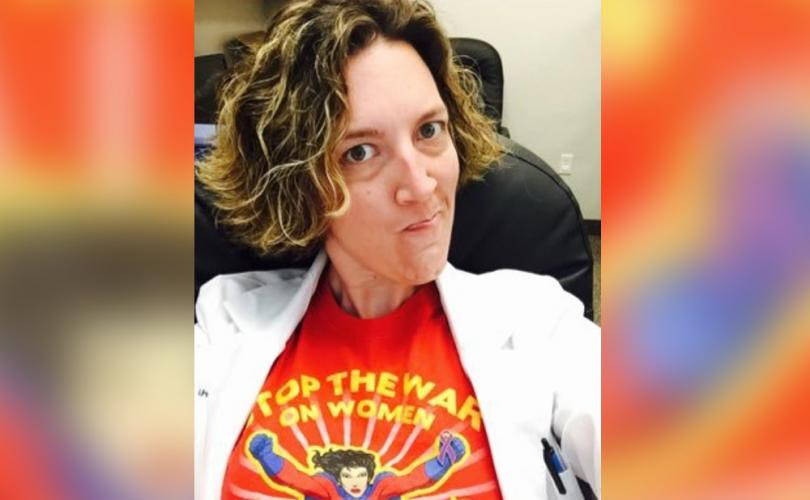
Torres’ did have a hearing on December 21, 2020 – the day before Stone’s first appointment at WAWC – where she challenged the suspension order. However, her license was not restored until March 24, 2021, after she had completed disciplinary measures imposed by the Board that included a course in Ethics and a fine.
However, the Stone complaint suggests that Torres continued to serve as WAWC long after her license was suspended in defiance to the Board order to cease and desist the practice of medicine.
That attitude of defiance was reaffirmed when WAWC’s Director of Communications, Robin Marty, retweeted a meme on December 4, 2021, that featured a t-shirt bearing the slogan “Keep Abortion Safe & Legal.” The words “& Legal” were crossed out and below it was written, “F*** SCOTUS we’re doing it anyway.”

That meme was a reference to the Dobbs v. Jackson Women’s Health Organization case in which the U.S. Supreme Court could overturn the 1973 Roe v. Wade decision that decriminalized abortion in America, and the willingness of some abortionists to continue conducting abortions even it becomes illegal in some states.
Marty had earlier tweeted a message that stated, “…everyone inside [WAWC] is feeling good about what we do, as long as we are able to do it.”
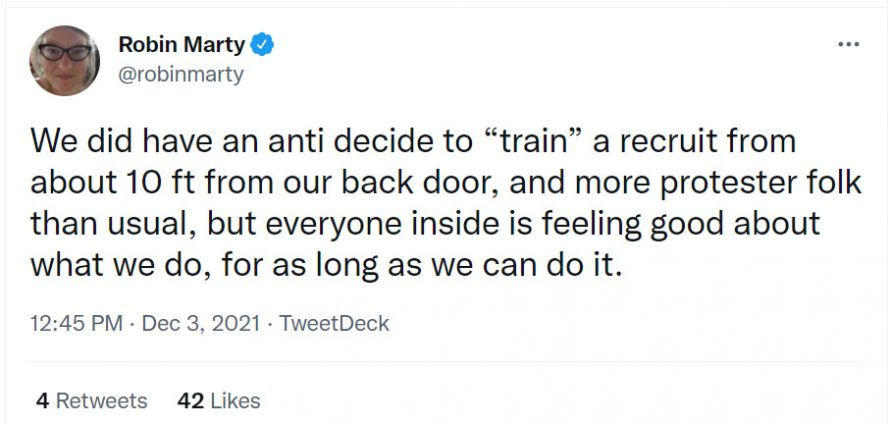
Operation Rescue responded by asking if that included April Lowery’s death from a uterine perforation, with a screen capture of the portion of her autopsy report that noted the cause of death.
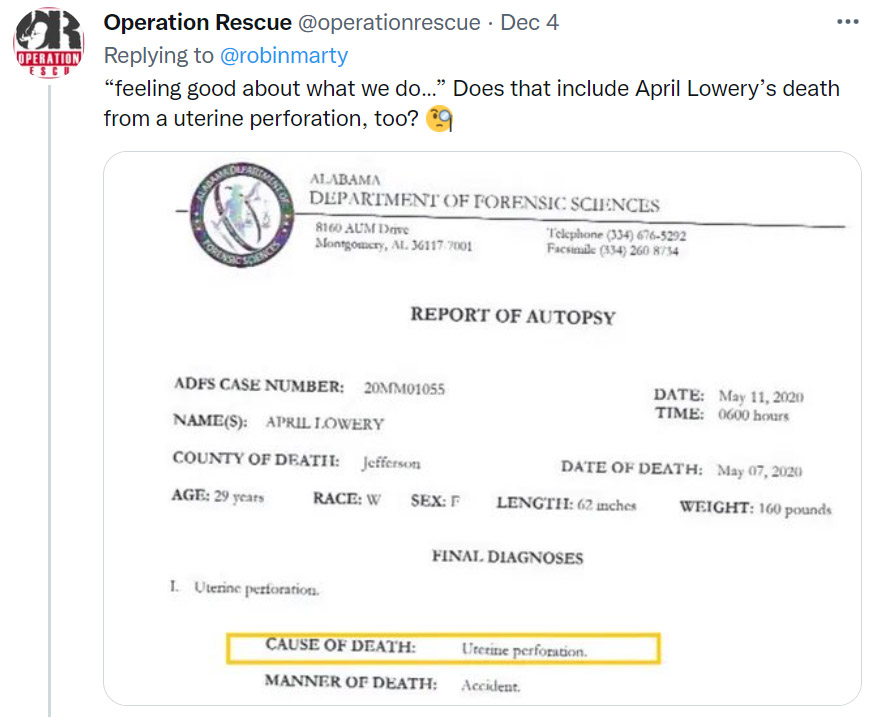
Marty responded with an angry tweet that stated, “If ‘prolife’ activists spent even a FRACTION as much time pulling up every person who died in pregnancy or childbirth they wouldn’t have a free second to harass clinics. A FRACTION.”
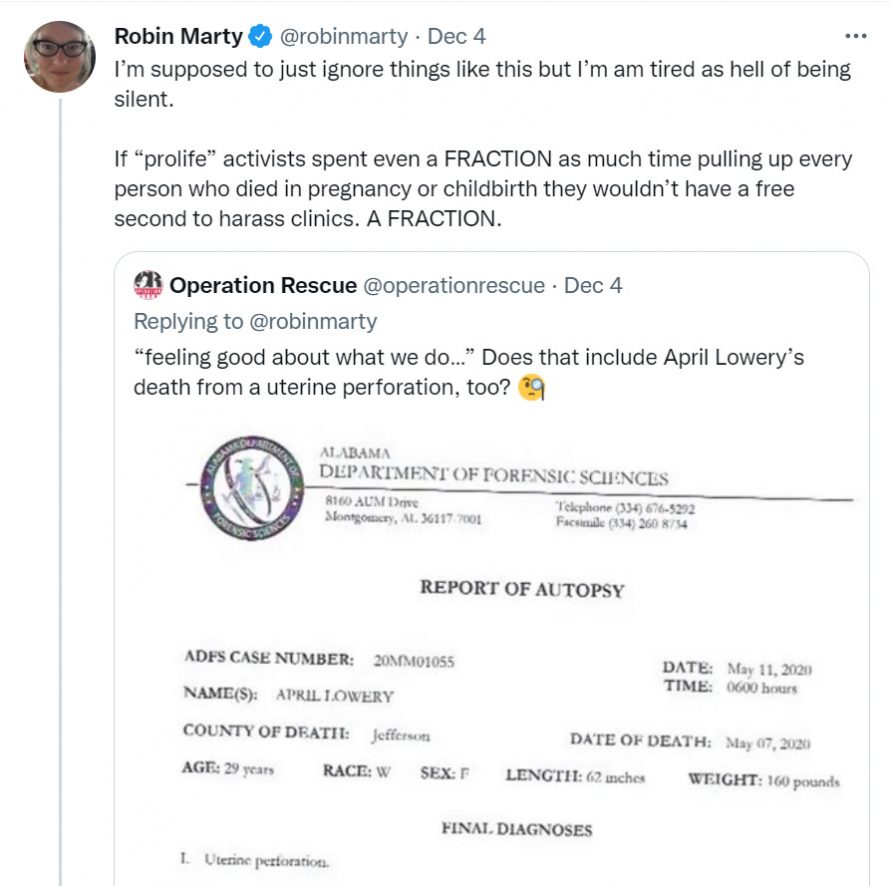
“Robin knows she is comparing apples with oranges to distract from the fact that women have been maimed and killed due to abortions at the facility where she works,” said Newman. “She is well aware that hospitals always report maternal deaths. On the other hand, abortion clinics work overtime to cover up when women die shoddy abortion practices, then lie about it when they are found out, as the Lowery ‘drug overdose’ concoction proves. I hope and pray that the West Alabama Women’s Center is held fully accountable in court and by the State for the harm they have caused, and that Alabama shuts it down forever.”
The next scheduled hearing in the Stone v. WAWC et al case is set for January 28, 2022.

